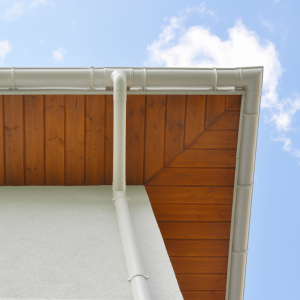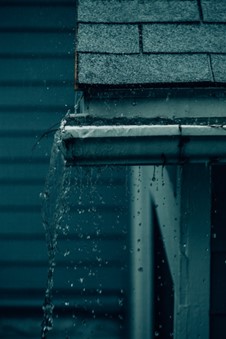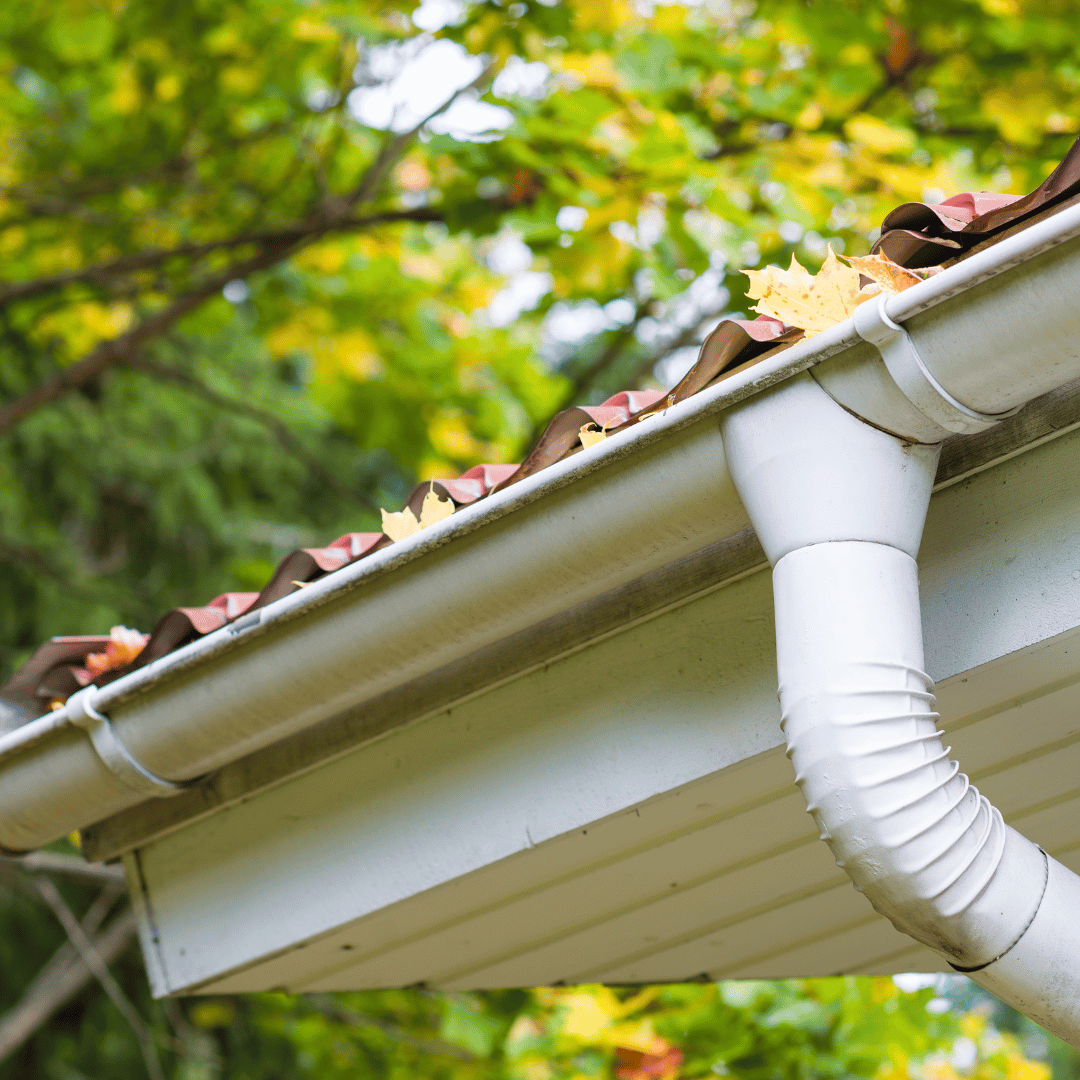
Essential Guide to Gutter Fascia Repair
Maintaining the integrity of your home involves a multitude of tasks, and one crucial aspect often overlooked is the condition of your gutters and fascia. The fascia is the board that runs along the edge of your roofline, serving as a critical component that supports your gutters and protects your home from moisture damage. At HomeSmiles, we understand that preventative home maintenance is key to avoiding costly repairs down the line.
In this article, we’ll delve into the importance of gutter fascia repair, helping you recognize the signs of damage and guiding you through the repair process. Whether you’re considering a DIY approach or seeking professional help, we’ll equip you with the knowledge you need to keep your home safe and sound. Let’s explore how regular inspections and timely repairs contribute to exterior home maintenance and ensure your home remains a safe haven.
What is Gutter Fascia?
Gutter fascia is an essential part of your home’s roofing system. It is the horizontal board located at the edge of the roofline, directly behind the gutters. Typically made of wood, vinyl, or aluminum, fascia serves multiple purposes:
- Support for Gutters: The fascia provides the structural support needed for your gutters to be securely attached to your home. Without a strong fascia, your gutters can sag or detach, leading to improper water drainage.
- Protection Against Water Damage: The fascia board helps protect the roof and the underlying structures from water damage by directing rainwater away from the eaves and walls of your home.
- Aesthetic Appeal: In addition to its functional benefits, the fascia adds to the visual appeal of your home. A well-maintained fascia can enhance the overall look of your exterior, complementing your roofline and gutters.
Neglecting the condition of your gutter fascia can lead to significant problems, including rotting, mold growth, and even structural damage to your home. Regular inspections are crucial as part of your interior home maintenance and exterior home maintenance routine, ensuring that this vital component remains in good shape and continues to perform its functions effectively.
In the following sections, we will discuss the signs that indicate your fascia may need repair, how to determine if it requires replacement, and tips for effective repair solutions.
Signs Your Fascia Needs Repair
Recognizing the signs of fascia damage early can help prevent more extensive repairs down the line. Here are some common indicators that your gutter fascia may need attention:
- Visible Rot or Decay: One of the most apparent signs of damage is visible rot or decay in the fascia board. If you notice any soft spots, peeling paint, or discoloration, it’s a clear indication that moisture has compromised the material.
- Sagging Gutters: If your gutters are sagging or pulling away from the house, it may be a sign that the fascia is weakening. A damaged fascia cannot support the weight of the gutters, leading to misalignment and potential detachment.
- Water Stains: Look for water stains on your home’s exterior, particularly around the eaves. Water stains can indicate that water is not draining properly due to faulty gutters or damaged fascia, allowing moisture to seep into the walls.
- Mold or Mildew Growth: The presence of mold or mildew near the gutters or fascia can suggest that water is collecting and not draining effectively. This can lead to both health concerns and structural damage if left unaddressed.
- Peeling Paint or Caulk: If you notice peeling paint or caulk along the fascia, it could signal that moisture is getting trapped behind the surface. This can lead to further deterioration if not repaired promptly.
- Pests: Termites or wood-destroying insects can also be a sign of a compromised fascia. If you see evidence of pests, it’s essential to inspect the area thoroughly.
Regular inspections of your gutter system, including the fascia, are vital as part of your preventative home maintenance routine. By being proactive and addressing any signs of damage early, you can protect your home from potential water damage and costly repairs associated with neglect. In the next section, we’ll discuss how to determine if your fascia needs to be replaced.
When to Replace Your Gutter Fascia
Knowing when to replace your gutter fascia is crucial for maintaining the overall health of your home’s roofing system. Here are some key factors to consider when deciding whether a repair is sufficient or a complete replacement is necessary:
- Extent of Damage: If the damage is localized to a small section of the fascia, you may only need to repair that specific area. However, if you notice widespread rot or decay affecting a significant portion of the fascia, a full replacement is typically more cost-effective in the long run.
- Material Type: The material of your fascia can influence its lifespan and repairability. Wooden fascia boards, for instance, are more prone to rot compared to vinyl or aluminum. If your fascia is made of wood and shows extensive damage, replacing it with a more durable material may be a wise choice.
- Age of the Fascia: Consider the age of your fascia. If it’s nearing the end of its expected lifespan and showing signs of deterioration, it might be more practical to replace it rather than invest in repairs that could be temporary.
- Water Damage to Surrounding Areas: Inspect the areas surrounding the fascia, including the roof and walls. If water damage extends beyond the fascia and affects the roof decking or siding, it may indicate that the fascia is not the only component in need of attention. In such cases, a complete replacement of the affected areas may be necessary.
- Structural Integrity: If the fascia has lost its structural integrity—meaning it can no longer support the gutters—replacement is essential. A compromised fascia can lead to further issues, such as sagging gutters and water pooling, which can damage your home’s foundation and lead to more costly repairs.
- Professional Assessment: When in doubt, consult a professional. An experienced contractor can evaluate the condition of your fascia and surrounding components, providing insight into whether a repair or replacement is the best course of action.
By keeping an eye on these factors, you can make informed decisions about your gutter fascia maintenance. Ensuring your fascia is in good condition is an integral part of your exterior home maintenance strategy, safeguarding your home against potential water damage. In the next section, we’ll explore the repair options available for damaged fascia.
Repair Options for Gutter Fascia
When it comes to addressing issues with your gutter fascia, there are several repair options available depending on the extent of the damage. Here’s a breakdown of the most common repair methods:
- Spot Repair:
- Ideal for Minor Damage: If the damage is limited to a small section of the fascia, spot repairs can be a cost-effective solution. This involves removing the damaged portion and replacing it with new material, ensuring a secure fit.
- Materials Needed: You’ll typically need a replacement piece of fascia material, wood screws or nails, and wood glue for added stability.
- Reinforcement:
- Strengthening Weak Areas: If your fascia shows signs of weakening but isn’t fully compromised, reinforcing it may be a viable option. This can involve adding brackets or additional support to strengthen the existing fascia.
- When to Use: This method is particularly useful if you’re experiencing sagging gutters or if the fascia is under increased weight from debris.
- Complete Replacement:
- For Extensive Damage: If the fascia is severely rotted or has widespread damage, complete replacement is the best option. This ensures the integrity of the entire gutter system and prevents future issues.
- Process: This involves removing the old fascia board, assessing the underlying structure for damage, and installing a new fascia board using appropriate fasteners. You may also want to consider upgrading to more durable materials, such as aluminum or vinyl, for long-term durability.
- Painting and Sealing:
- Protective Measures: After repairs or replacement, applying a high-quality paint or sealant can help protect the fascia from future water damage and UV exposure. Choose materials specifically designed for outdoor use to ensure longevity.
- Maintenance Tip: Regularly inspect and repaint or reseal your fascia every few years as part of your preventative home maintenance routine.
- Professional Services:
- Hiring Experts: For more complicated repairs or if you’re unsure about tackling the project yourself, hiring a professional contractor can ensure that the job is done correctly. They can assess the condition of the fascia and gutters and provide expert recommendations for repairs or replacements.
- Benefits: Professionals typically have access to better tools and materials, ensuring a quality finish that can help prolong the life of your gutters and fascia.
By understanding these repair options, you can take the necessary steps to maintain your gutter fascia effectively. Remember, timely repairs not only enhance the aesthetic appeal of your home but also contribute to the overall integrity of your roofing system. In the next section, we’ll discuss the importance of regular maintenance to prevent future issues with your gutter fascia.
Preventative Maintenance for Gutter Fascia
Maintaining your gutter fascia is essential for ensuring the longevity and effectiveness of your home’s drainage system. Regular upkeep not only enhances the appearance of your property but also prevents costly repairs down the line. Here are some key preventative maintenance tips to keep your gutter fascia in top condition:
- Regular Inspections:
- Frequency: Schedule inspections at least twice a year—preferably in the spring and fall—to catch any potential issues early.
- What to Look For: Check for signs of rot, water damage, or discoloration. Look for sagging or loose sections, as these can indicate structural weaknesses.
- Gutter Cleaning:
- Importance of Clean Gutters: Clogged gutters can lead to water overflow, which can damage the fascia. Ensure that leaves, twigs, and other debris are removed regularly.
- Frequency: Aim to clean your gutters at least twice a year or more frequently if you have overhanging trees. Consider scheduling gutter cleaning as part of your interior home maintenance routine.
- Sealing and Painting:
- Protective Coating: Apply a water-resistant sealant or paint specifically designed for outdoor use to protect the fascia from moisture and UV damage.
- When to Reapply: Repaint or reseal every few years or whenever you notice wear and tear to maintain protection.
- Trim Overhanging Branches:
- Minimize Debris: Keep trees trimmed back to prevent leaves and branches from accumulating in your gutters and causing clogs.
- Protect Your Home: This also helps reduce the risk of branches falling and causing direct damage to your fascia or gutters during storms.
- Install Gutter Guards:
- Prevent Clogs: Consider investing in gutter guards or screens to reduce debris accumulation and keep your gutters functioning properly.
- Long-Term Benefits: Gutter guards can save you time and money on maintenance, making it easier to keep your fascia in good condition.
- Professional Maintenance Services:
- Consider Hiring Experts: For those who prefer a hands-off approach, hiring a professional home maintenance service like HomeSmiles can provide comprehensive inspections and maintenance.
- Why Choose Professionals: They can identify potential issues you might overlook and ensure that all aspects of your gutter system, including the fascia, are in optimal condition.
By implementing these preventative maintenance strategies, you can protect your gutter fascia and ensure that it continues to function effectively. Regular maintenance not only enhances the aesthetic appeal of your home but also safeguards against potential water damage and costly repairs. In the next section, we will summarize the key points covered in this article and emphasize the importance of maintaining your gutter fascia.
The Importance of Gutter Fascia Repair and Maintenance
In summary, maintaining the integrity of your gutter fascia is essential for protecting your home from water damage and ensuring your gutters function effectively. Regular inspections and proactive maintenance can help you identify and address issues before they escalate, ultimately saving you time and money in costly repairs.
Key Takeaways:
- Preventative Home Maintenance: Incorporate regular inspections and cleaning into your interior home maintenance and exterior home maintenance routines. This will not only keep your gutters in top shape but also enhance your home’s overall curb appeal.
- Professional Help: Don’t hesitate to seek professional assistance for tasks such as gutter cleaning or pressure washing if you’re unsure or unable to perform them yourself. Companies like HomeSmiles are equipped to handle these tasks efficiently.
- Protect Your Investment: By taking care of your gutter fascia, you are safeguarding your home from potential water damage that can lead to more significant structural issues.
If you suspect your gutter fascia may need repairs or if you’re due for an inspection, reach out to HomeSmiles today. Our team of experts is here to help you maintain your home and ensure it remains in excellent condition, so you can avoid those pesky “honey-do” items piling up on your list. Don’t wait until it’s too late—schedule your appointment for preventative home maintenance today! Call us at [your phone number] or visit our website to learn more about our services!
- Protecting Your Property: Why the Right Cleaning Method Makes All the Difference
- The #1 Thing That’s Dulling Your Curb Appeal (And How to Fix It)
- How Maintenance Bundles Provide Peace of Mind for Busy Small Business Owners and Facility Managers
- Essential vs. Complete Home Packages: Choosing the Right Preventive Care for Your Property
- How a Simplified Service Model Benefits Both Homeowners and Franchisees Alike


